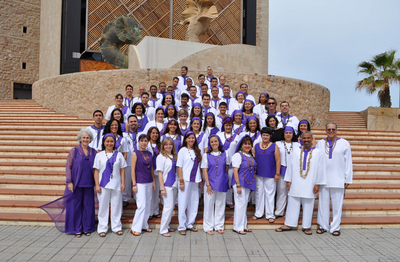Schola Cantorum de Venezuela, coming to Ann Arbor, keeps tradition growing

The Schola Cantorum de Venezuela comes to Ann Arbor on Thursday.
But if you ask Maria Guinand, the group’s director and conductor, who has been with Schola Cantorum for more than 35 of its 45 years, she will describe the it thus: “Schola Cantorum is a big river where the waters are always running and being renewed,” she said in a recent phone call from Caracas.
And water—South American freshets, streams, torrents—is among the refreshments when the choir, 36-voices strong on this U.S. tour, makes its Ann Arbor debut Thursday at St. Francis of Assisi Catholic Church. The group appears here under University Musical Society auspices.
The program divides into two halves, Guinand said: Agua (Water) and Fiesta.
PREVIEW
Schola Cantorum de Venezuela
- Who: Latin American choral group.
- What: A program of Latin American a cappella choral music.
- Where: St. Francis of Assisi Catholic Church, 2250 E. Stadium Blvd.
- When: Thursday, 7:30 p.m.
- How much: $25 and $35. Tickets available from the UMS Ticket Office in the Michigan League, 734-764-2538, and online at ums.org.
While the choir frequently performs with orchestra, this visit brings it alone, and that is fine with Guinand.
“Choral music is not only related to choral-symphonic music or to opera,” she said. “It has its own repertoire, its own language, philosophy and way of being taught.”
The mission of the Schola Cantorum, she said, is “to give choral music its own space in the musical life of our time. We believe the a cappella repertoire has to be more developed and better known, and we want to encourage more composers to write for a cappella chorus. They are many composers who want to write for the chorus who do not know how to do that. We are really choir people, proud to be on our own.”

